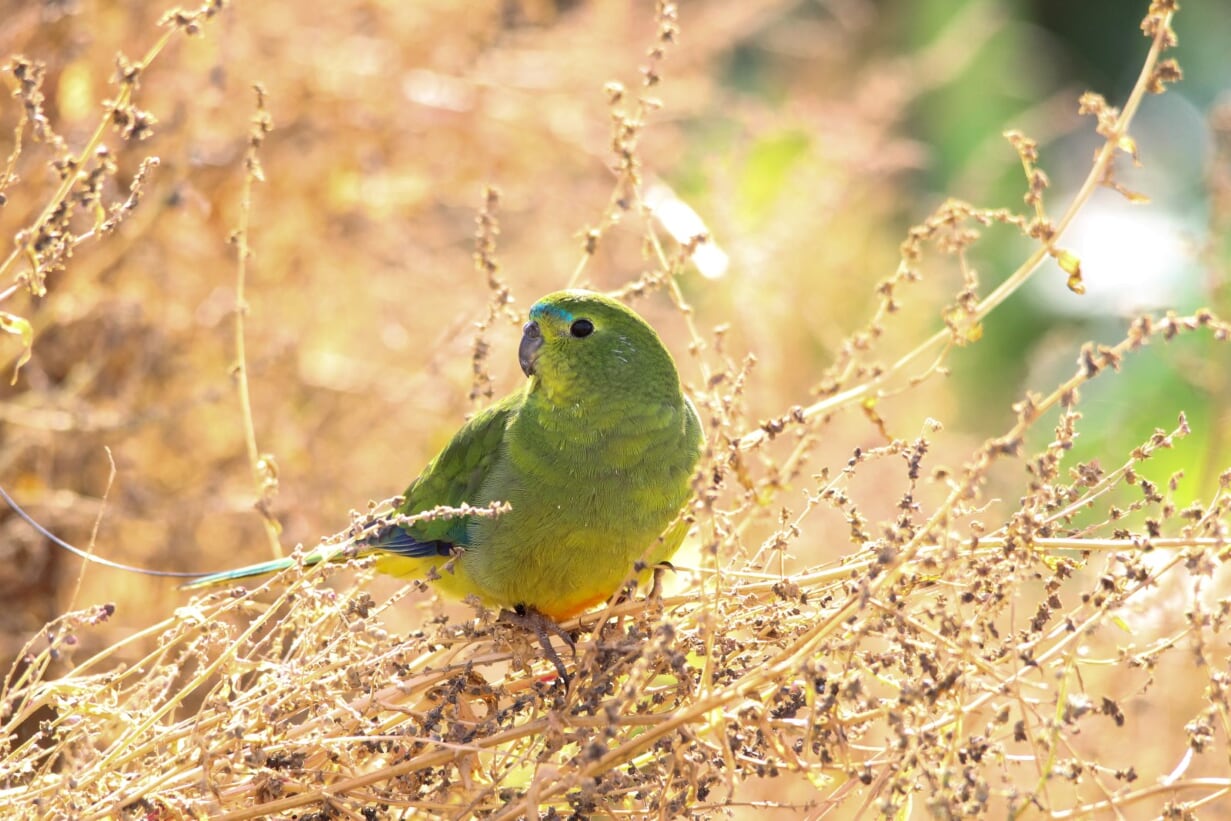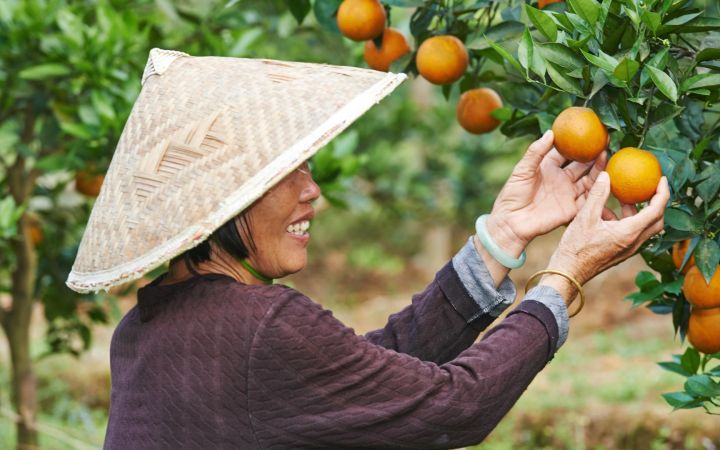
When dealing with highly endangered animals and plants, species recovery specialists often have to make quick decisions with some uncertainty about the possible outcomes.
DELWP’s Specific Needs Assessment (SNA) is delivering big benefits for the critically endangered Orange-bellied Parrot (Neophema chrysogaster).
DELWP Natural Environment Program Officer, Dr Rachel Pritchard, and Biodiversity Futures Project Officer, Dr Ella Kelly, worked with the recovery team and have published their findings about the effectiveness of the SNA in one of the Society for Conservation Biology’s scientific journals, Conservation Science and Practice.
Their paper examines how the recovery team used DELWP’s Specific Needs Assessment (SNA) tool to help them make complex decisions about their captive-release programs.
‘The Orange-bellied Parrot is one of our most critically endangered species,’ Rachel said.
‘It has a long-running recovery program. There are many complex decisions we need to make. The decisions we made after using the Specific Needs Assessment have worked out remarkably well on the ground.
‘We can see what looks like the start of recovery happening because of the actions we chose to pursue.’
Specialised tools
The SNA is used to assess the biodiversity benefit of different potential management actions.
It sits alongside other DELWP decision support tools such as Strategic Management Prospects (SMP) to support threatened species and biodiversity decision-making and investment under the Victorian Government’s Biodiversity 2037 plan.
These tools were developed jointly by two DELWP teams – its Biodiversity Strategy and Knowledge branch and the Arthur Rylah Institute for Environmental Research.
While SMP examines the benefit and cost-effectiveness of landscape-scale actions such as weed control and how those will assist multiple species, the SNA is more focused on targeted or species-specific actions.
Ella said SNAs take the SMP’s broad principles and help researchers to test solutions for specific species and assess the possible impacts.
‘Uncertainty is a real problem in all biodiversity decision-making, but particularly with threatened species because there’s not that much data,’ Ella said.
‘There aren’t many individuals, your sample sizes are really small, so it’s sometimes hard to test different actions on the ground.
‘There’s a lot of pressure. It can be hard to decide to do something different to what you’re already doing.
‘Decision-support tools like Specific Needs Assessments help overcome that bit of inertia to stick to the status quo. Often we find it hard to move away from the status quo, because although there is risk in the status quo, the risk is familiar, compared to the unfamiliar risks of doing something new.’
Crucial decision
In 2016, the Orange-bellied Parrot National Recovery Team began trialling four different release methods simultaneously to respond to critically low numbers in the wild and the urgent need to identify the most effective release strategy.
Every year, the team grappled with the complex decision of how to distribute the birds available for release, among these four pathways.
Rachel said the SNA tool helps recovery teams make decisions with greater confidence, giving people with the best knowledge more structure to make better decisions.
‘The SNA lets you test hypotheticals. You can look at the little bit of data you have, what you think will happen if you keep doing what you’re doing and what results you might expect if you tried other alternatives.’
‘It helps you identify your best bet.’
Release method chosen
The SNA, applied to the parrots in 2019, compared an estimate of the status quo allocation of birds for release to possible alternatives.
The SNA showed the team had growing confidence in juvenile releases in late summer and its desire to increase the number of birds it released this way.
In pre-SNA discussions, the team agreed to increase its juvenile release from 15 to 35 birds.
But the SNA process, in which team members individually estimated the benefits of the alternative management strategies, showed team support for the late summer release was even stronger, so the group further increased the number of birds released this way to 50.
The decision was not based on new information, but a new way of testing support for that decision.
‘We had more confidence to lean harder into what looked like the more promising strategy because of that structured approach,’ Rachel said.
‘The SNA process gave us more confidence to try new strategies in the field, compared to how we felt about the same options when we made decisions by simply thinking and talking about them.’
Success
It proved to be a winner, Rachel said.
And the challenges faced by the Orange-bellied Parrot and the lessons the recovery team learned through the SNA approach are common to threatened species around the world, she said.
‘It has worked on the ground. For the past two years, we have seen more OBPs at the key times of the year when we count them and check their breeding than we have seen in the past decade,’ she said.
‘A population that has been declining for 40 years is now increasing.’
Ella said the SNA tool is a more inclusive and structured way to make decisions that gives everyone’s input equal weight rather than emphasising the views of more outspoken participants, and explicitly captures expert uncertainty.
‘When you see the results you get at the end, everyone is more likely to get behind that decision and act on it because they have all had an equal say in the process,’ she said.








